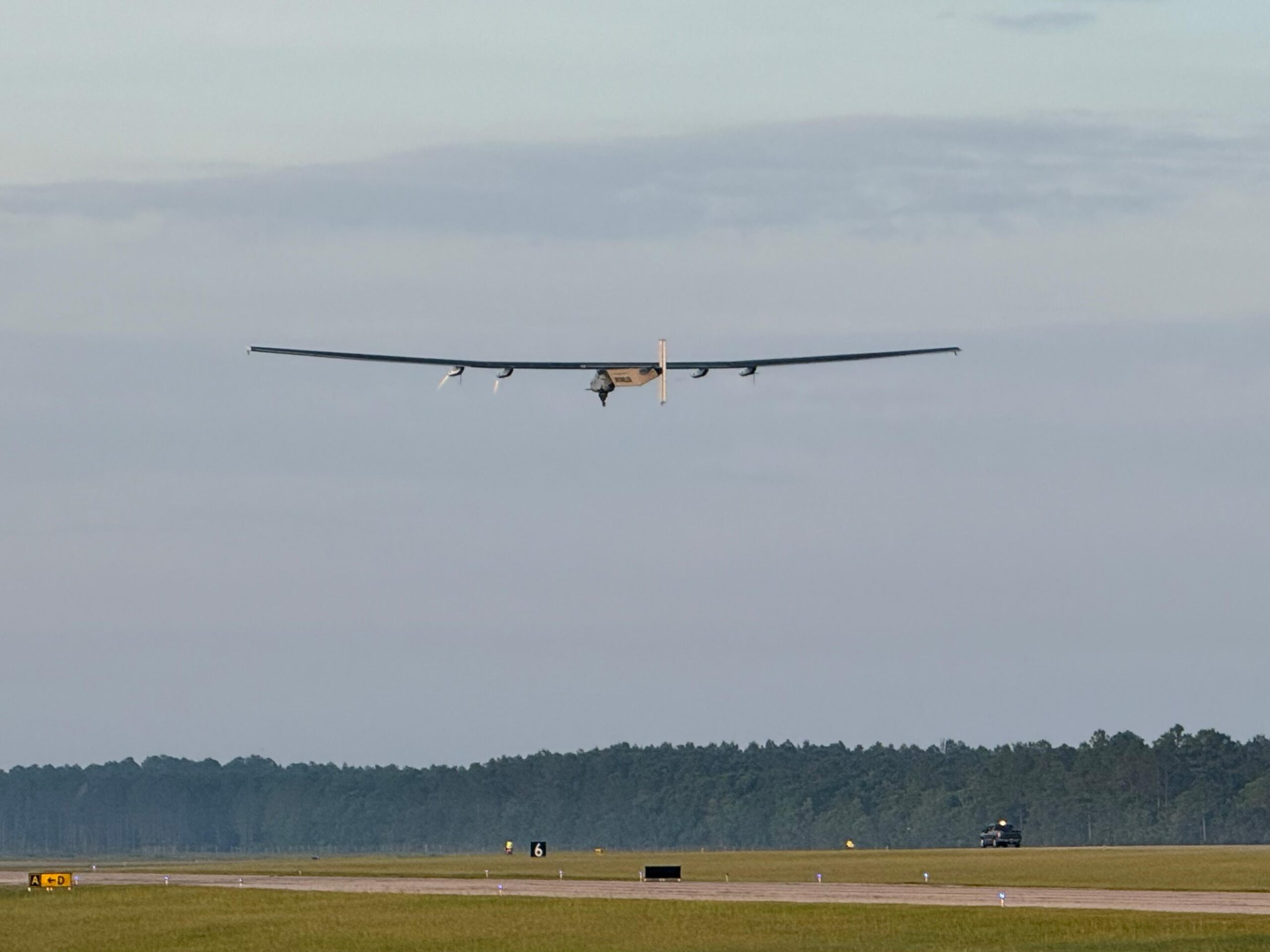Skydweller Aero Inc., a U.S.-Spanish aerospace company, is redefining the boundaries of aviation with its flagship aircraft the Skydweller. This solar-powered, autonomous drone is engineered for perpetual flight, capable of remaining airborne for months without refueling. Originally based on the Solar Impulse 2, a manned solar aircraft that successfully circumnavigated the globe, Skydweller has been transformed into an uncrewed aerial system (UAS) optimized for long-endurance missions. Its unique combination of clean energy, advanced autonomy, and ISR (Intelligence, Surveillance, and Reconnaissance) capabilities positions it as a game-changer for defense, environmental monitoring, and communications.
Technical Specifications
Technically, Skydweller is a marvel of aerospace engineering. It boasts a wingspan comparable to a Boeing 747 (approximately 72 meters) and is constructed from lightweight carbon fiber composite materials. Solar panels are embedded across its wings and fuselage, feeding high-capacity lithium-ion batteries that allow for continuous operation, even during nighttime. The aircraft can carry up to 800 pounds of payload and has demonstrated flights exceeding 73 hours, with the potential for indefinite endurance. Its fully autonomous flight system is capable of real-time decision-making, route optimization, and dynamic mission re-tasking, making it highly adaptable to changing operational needs.
Autonomy and Artificial Intelligence
The autonomy of Skydweller is powered by proprietary artificial intelligence algorithms. These enable the aircraft to optimize its flight path in real time, avoid adverse weather conditions, and fuse data from multiple sensors for onboard processing. This level of autonomy reduces the need for constant ground control and allows Skydweller to operate in remote or contested environments with minimal human intervention. The aircraft’s ability to make decisions independently is particularly valuable for ISR missions that demand persistent coverage and rapid adaptability.
ISR Applications
Skydweller’s ISR applications are among its most transformative capabilities. In maritime domain awareness, the drone excels at monitoring vast oceanic regions where traditional aircraft struggle with endurance and cost. It can detect drug trafficking vessels, monitor pirate activity, track naval movements in contested waters, and enforce fishing regulations. A recent 73-hour continuous solar-powered flight conducted in partnership with the U.S. Navy demonstrated Skydweller’s effectiveness in maritime ISR, validating its endurance and sensor performance.
Border Surveillance
For border surveillance, Skydweller offers persistent aerial coverage that can detect unauthorized crossings, smuggling operations, and environmental changes such as wildfires or floods. Its long dwell time and wide-area sensors make it a cost-effective alternative to manned patrols or satellite imagery.
Military Reconnaissance
In military reconnaissance, Skydweller provides a risk-free platform for gathering intelligence on troop movements, infrastructure targets, and battlefield conditions. Its uncrewed nature eliminates the risk to human pilots and allows it to operate in GPS-denied or contested environments.
Disaster Response and Emergency Services
Beyond defense, Skydweller has significant applications in disaster response and emergency services. It can map disaster zones, relay communications in areas with damaged infrastructure, and coordinate rescue operations using live aerial imagery. Its ability to remain airborne indefinitely makes it invaluable during prolonged crises.
Environmental Monitoring
Environmental monitoring is another key area where Skydweller shines. Governments and NGOs can use it to track wildlife migration, monitor deforestation, and measure air quality and climate data. Its zero-emission profile aligns with global sustainability goals, offering a green alternative to traditional aircraft.
Economic and Strategic Advantages
Economically and strategically, Skydweller offers substantial advantages. Its perpetual flight capability eliminates refueling costs and downtime, while its uncrewed operation removes risk to human life. Solar power ensures a low operational cost and zero carbon footprint. With a high payload capacity, Skydweller supports diverse sensor packages, and its autonomy reduces the need for ground personnel. According to Skydweller Aero, the platform offers cost savings ranging from tenfold to a hundredfold compared to fleets of combustion-powered aircraft or drones.
Strategic Partnerships and Deployment
Strategic partnerships further underscore Skydweller’s growing role in ISR ecosystems. The company has collaborated with the U.S. Navy for maritime surveillance, with U.S. Southern Command for counter-narcotics and border security missions, and with European defense agencies for environmental and strategic monitoring. These partnerships highlight the aircraft’s versatility and its potential to support a wide range of operational needs.
Future Outlook
Looking ahead, Skydweller is more than just a drone. It’s a platform for persistent presence. As defense and commercial sectors seek cleaner, more autonomous solutions, Skydweller is uniquely positioned to meet these demands. Future developments may include enhanced sensor integration such as synthetic aperture radar and hyperspectral imaging, swarm coordination with other autonomous systems, and global deployment for climate research and communications infrastructure. With its blend of endurance, autonomy, and ISR capability, Skydweller represents a paradigm shift in aerial surveillance and strategic operations.
Concluding Thoughts
Skydweller Aero Inc. has reimagined what’s possible in aviation. By harnessing solar energy and advanced autonomy, the Skydweller drone offers a clean, cost-effective, and persistent ISR solution for a wide range of applications, rom military reconnaissance to environmental stewardship. As global challenges grow more complex, platforms like Skydweller will be essential in providing real-time intelligence, sustainable operations, and unprecedented aerial coverage. The sky, quite literally, is no longer the limit.
